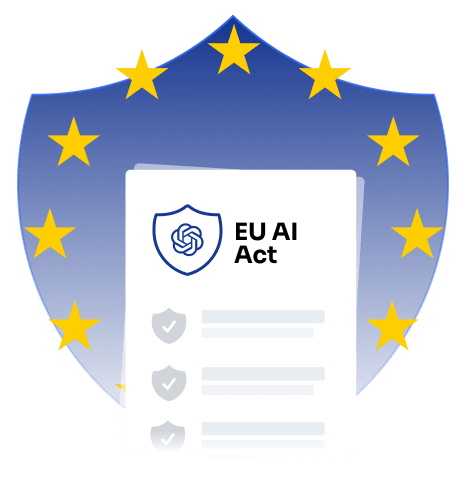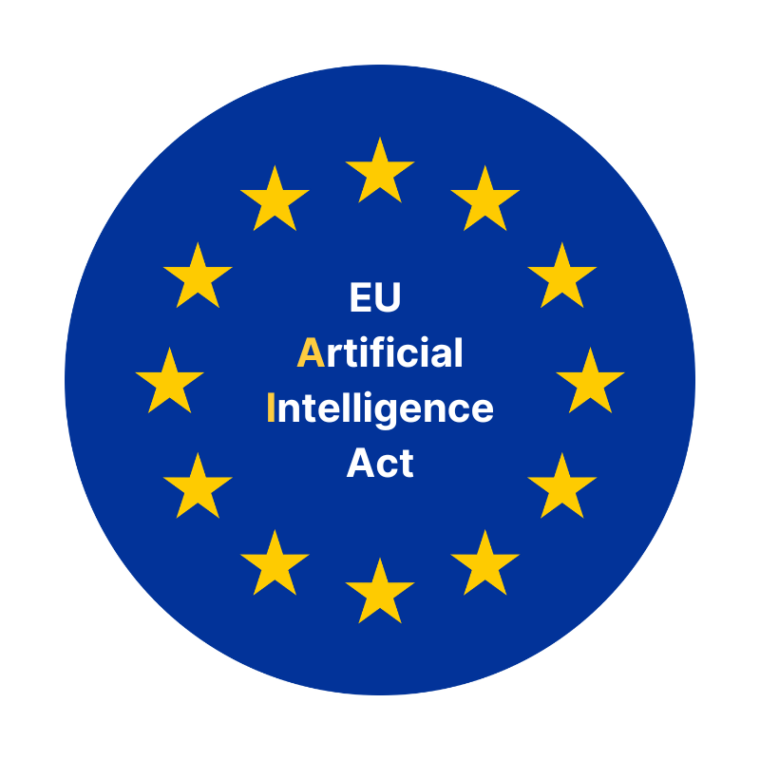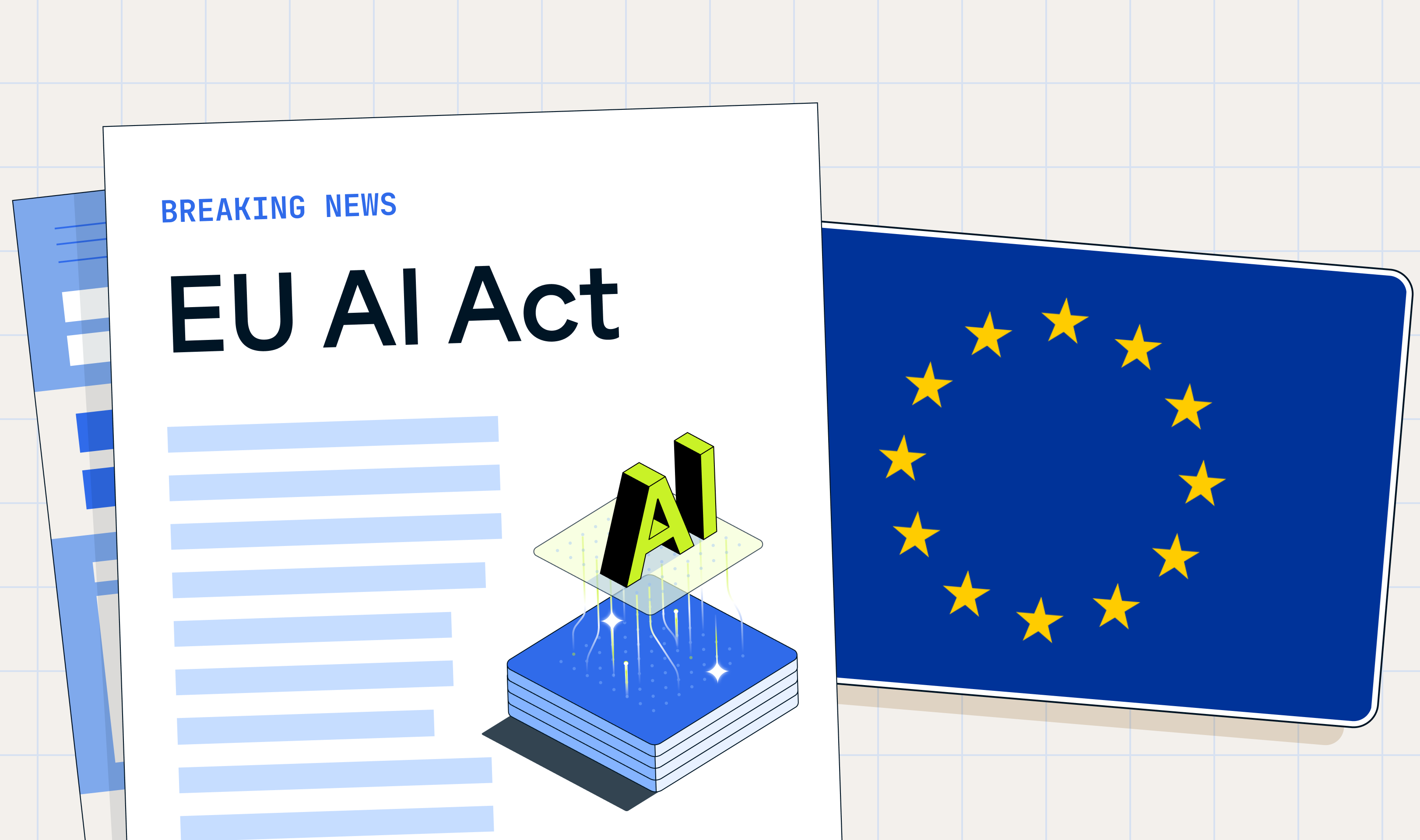The EU AI Act: Why It Matters to You

Corporate leader’s legal teams, compliance officers, and technology planners must grasp the EU AI Act to benefit from AI and address its regulations. This article highlights the Act’s main points and shows why staying updated and ready matters for professionals in corporate roles.
The European Union has created the first major law in the world to regulate AI. This law matters to companies, developer’s everyday users, and anyone involved with or influenced by artificial intelligence.
Let’s get a deeper understanding
Who Needs to Know About the EU AI Act?
You might be asking if this law concerns you. The easy answer is most likely it does. This is true if your business designs, uses, or sells AI systems in the EU or even outside it but serves EU customers.
Here are the Groups it Applies to:
- Those creating or providing AI systems
- Companies bringing AI tools into the EU or selling them there
- Businesses or organizations using AI to decide things that impact people living in the EU
- Even companies outside the EU whose AI systems affect EU residents
If your AI-based product or service connects to the European market in any way, this law is something you need to pay attention to.
The EU’s Method to Handle AI Risks
The EU came up with a clever idea to divide AI into different risk levels. This avoids using the same rules for everything and directs attention to the areas that matter most.
1. Unacceptable Risk
The EU bans these. Think about social scoring by governments (like something out of a dystopian movie) or AI designed to control people’s actions in harmful ways.
- Social scoring systems (e.g., ranking people by behaviour or trustworthiness)
- Real-time biometric surveillance in public spaces (with limited exceptions)
- AI systems that manipulate behaviour using subliminal techniques
- Exploiting vulnerabilities (children, disabled individuals, etc.)
- Predictive policing based on profiling
2. High-Risk AI
This group covers AI in fields like healthcare, education, hiring, law enforcement, or essential infrastructure. Since these can impact people’s rights, they have to follow strict regulations.
3. Limited Risk
Similar to chatbots, these are fine to use but need to be clear about their nature (people should know they are interacting with a bot).
4. Minimal or No Risk
Examples include AI in spam filters or video games. These are not covered by responsibilities under the Act.
The EU came up with a clever idea to divide AI into different risk levels. This avoids using the same rules for everything and directs attention to the areas that matter most.
What Should High-Risk AI Systems Focus On?

Conformity Assessment (Article 43)
Test and Review your System Before it Goes Live – Before deployment in the market, make sure your AI system satisfies EU safety and performance standards by conducting internal testing, risk assessments, and pre-deployment evaluations.

Technical Documentation (Article 11)
Keep Detailed Technical Records – Maintain thorough technical records by keep organized records that describe the architecture, function, data sources, and risk management techniques of your system.

Data and Data Governance (Article 10)
Rely on Data that is High-quality and free from bias – high-quality, bias-free data is a necessity particularly during the training, validation, and testing stages, use datasets that are representative, pertinent, and devoid of bias or errors.

Human Oversight (Article 14)
Make Sure People Oversee Decisions, Not Just AI – Create systems for efficient human oversight to stop or reduce the risks that AI decisions could pose.

Record-Keeping (Article 12)
Keep Logs in Place to Support Audits – Establish automated logging to enable accountability and traceability in the event that something goes wrong or regulators need to inspect the matter or issue.

EU Database Registration (Article 49)
Register your System in a Public EU Database – To ensure transparency for both users and authorities, high-risk systems must be listed in a central database run by the EU Commission.
The objective? To create safe, open, and aligned with basic rights reliable artificial intelligence. The EU AI Act not only calls for compliance but also promotes responsible innovation.
How Will It Be Enforced?
The EU plans to ensure enforcement happens. Here is how they intend to do it:
- Every member state will set up its own national authority to oversee who follows the rules.
- A European AI Board will keep everything organized across different countries.
- The authorities will get tools to inspect, look into, stop, or even block AI systems that break the law.
They will keep a sharp eye out on high-risk or banned AI systems.

Current Challenges in Agriculture and Traditional Farming
Financial Penalties
The Act sets out tiered fines based on the nature of the violation:
- Use of Prohibited AI Systems (e.g., manipulative, exploitative, or unlawful biometric surveillance): up to €35 million or 7% of global annual turnover [Article 99(3)].
- Failure to Comply with High-Risk AI Obligations (e.g., human oversight, risk management, or data quality): up to €15 million or 3% of global annual turnover. [ Article 99(4)]
- Breaches of Transparency or Documentation Requirements: up to €7.5 million or 1% of global annual turnover. [Article 99(5)]
These penalties apply to providers, deployers, and other responsible parties.
Market Restrictions
Beyond fines, non-compliant AI systems may be:
- Banned from entering or remaining on the EU market
- Withdrawn from circulation or use
- Subject to suspension of conformity assessments or CE markings
Such actions aim to prevent unsafe or unlawful AI technologies from reaching the public under Article 83 of the act.
Strategic Impact
Non-compliance may result in Loss of access to EU markets, Reputational damage or Exclusion from EU-funded projects or public procurement. In short, aligning with the EU AI Act is not just about avoiding penalties – it is key to maintaining market presence, user trust, and long-term viability.
Correspondence with Other Laws
The EU AI Act operates alongside other key regulations in Europe. It works with:
- The GDPR – The EU AI Act complements the GDPR by reinforcing protections when AI systems process personal data. While the GDPR ensures data minimization, consent, and transparency, the AI Act adds obligations around fairness, bias mitigation, and human oversight in automated decision-making. Recital 44 emphasis
- The Digital Services Act (DSA) – The DSA governs the responsibilities of online platforms and services. Where AI is used in content moderation, recommendation algorithms, or targeted advertising, the AI Act imposes transparency and risk management duties, ensuring AI-driven platform services remain safe and accountable. Recital 6 clarifies that the AI Act applies in synergy with DSA, especially for systemic risks associated with algorithmic decisions
- The Product Liability Directive – By guaranteeing unambiguous liability in cases where AI systems cause harm, the updated Product Liability Directive enhances the AI Act. While the Directive guarantees that injured parties can seek compensation without having to prove fault, the AI Act lays out preventive obligations (Recital 80 states that measures under Risk management in article 9 and post-market monitoring in article 61 should align with Product Liability Directive).
Enforcement Timelines
The EU AI Act officially entered into force on 1st August 2024, initiating a phased implementation schedule. Starting 2nd February 2025, provisions banning certain high-risk AI practices—such as manipulative systems, social scoring, and exploitative biometric surveillance—become applicable, alongside AI literacy obligations for providers and deployers.
By 2nd August 2025, obligations for general-purpose AI (GPAI) models, governance structures, and penalties come into effect. The core requirements for high-risk AI systems, including conformity assessments and oversight mechanisms, become fully enforceable from 2nd August 2026. An extended transition period until 2nd August 2027 is provided for high-risk AI systems embedded in regulated products (e.g., medical devices, vehicles). Businesses operating within the EU or offering AI systems to EU users should align their compliance strategies with these enforcement dates to ensure adherence to the Act’s requirements and mitigate potential legal and financial risks
Conclusion: Using AI Responsibly
The EU AI Actdoes not block innovation – it supports responsibility. It aims to guide technological growth while ensuring society gains from it, without putting our safety, freedoms, or rights at risk. It serves as a reminder to protect human values and democracy as technology advances.
This legislation offers companies a chance to take the lead in acting going beyond just meeting rules. It pushes businesses to create systems that work well, while also being clear, dependable, and inclusive. It gives a solid standard to define ethical AI in real terms instead of leaving it as just a concept.
This law reminds developers that their code affects people. Making AI that is fair, open, and secure is no longer just smart; it is becoming required by law. The Act pushes engineers and data experts to ask not what their models can achieve but also what they are supposed to achieve.
For people who deal with AI decisions, the law is a guarantee. It aims to ensure AI does not stay hidden or unaccountable. People should be able to track and question its effects. The goal is clear—to make technology work for humans, not the other way around.
If you are a developer refining algorithm, a founder launching an AI product, a compliance officer creating risk controls, or a policymaker writing local regulations, you should focus on the EU AI Act.
The future of AI is no longer just a concept.
It’s present, it’s strong, and now – it has rules.
Let’s create it.